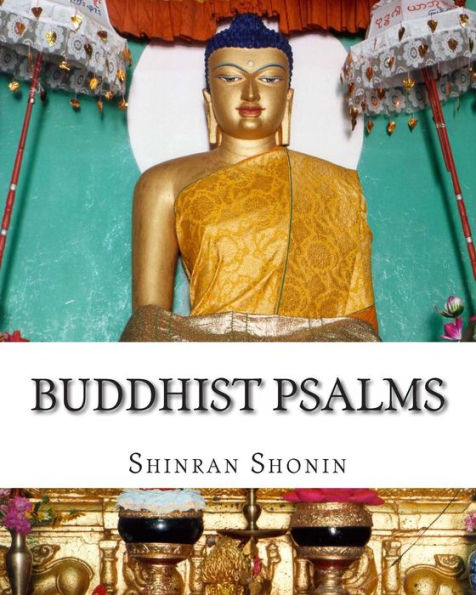Shinran said that because we are all defiled by greed, hatred and delusion, we have no chance of gaining enlightenment by ourselves. Many Buddhists at that time felt that the Dharma of the Buddha had declined to such a point that people could not do it themselves anymore, a concept called mappo in Japanese, a Mahayana eschatology that claims that the ability to practice Dharma properly declines over time. Instead the Pure Land School of Buddhism encouraged its practitioners to rely on the vow of the Buddha Amitabha (Sanskrit, Amida in Japanese) to save all beings from suffering. According to three particular sutras Amitabha vowed to ensure that anyone who chanted his name would be reborn in his Pure Land of Sukhavati (Sanskrit, lit. Land of Bliss) and once there would easily be able to gain enlightenment, because they would not be hindered by the problems of day-to-day life.
Shinran's innovation in Pure Land Buddhism was to take this teaching to its logical extreme. He taught that awakening to the saving grace of Amida Buddha is the central matter. Continuous chanting of the nembutsu (namu amida butsu) , is not necessary, as Honen, his mentor, had believed. Instead, Shinran taught his followers that the nembutsu should be said as a form of gratitude rather than a way of achieving rebirth in the Pure Land. Faith in Amida Buddha would lead to a deep spiritual awakening, called shinjin, which severs the practitioner forever from birth and death in the world of samsara, and erases karma accumulated through many rebirths. Shinran taught that the advantage of the Path of the Nembutsu can be experienced here and now. This was summed up by Shinran in the four Chinese characters of "Heizei Gojo" which means "Complete the Great Task while alive." Shinran taught that the "Great Task," or the purpose of human life, was to achieve salvation from Amida in this life. Without salvation by Amida in this life there could be no salvation after death, he taught. The arising of shinjin also assures the devotee of birth in the Pure Land, and the attainment of enlightenment there.
Another aspect of Shinran's doctrine was the emphasis on gratitude and humility. Thus, Shinran taught that it was important to be humble and thankful for one's life. This gratitude could be expressed through the nembutsu, but also through a general sense of appreciation.
Over the course of his life, Shinran read the Complete Sutras five times, and, as stated in his short book "Sho Shin Ge" (True Faith Hymn), he came to the conclusion that Sakyamuni's appearance in this world was for the sole purpose of teaching Amida's Vow. Throughout his life Shinran let it be known that he never taught anything other than what Sakyamuni Buddha taught in the sutras.



